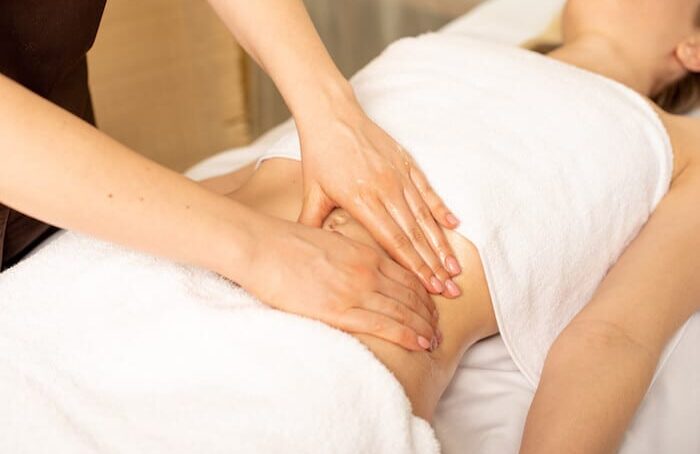3 Fastest Gut Massage Techniques to Relieve Constipation
Constipation can be incredibly uncomfortable and frustrating, leaving you feeling bloated, sluggish, and irritable. Whether it’s an occasional issue or a more chronic problem, I’ve found that a gentle gut massage for constipation can be a simple yet highly effective way to relieve discomfort and stimulate digestion. When I first learned that massaging specific areas of the abdomen could help relieve constipation, I was intrigued. After trying these techniques myself, I was amazed at how well they worked. Here are three effective massage techniques to help get things moving naturally and bring relief.
Why Gut Massage Helps with Constipation
Massage works by stimulating the muscles and nerves in the abdominal area, which helps promote movement in the intestines. Constipation often results from a sluggish digestive system, and a gut massage for constipation can encourage peristalsis—the wave-like muscle contractions that move food through the digestive tract. By focusing on specific areas and applying gentle pressure, these massage techniques can help ease constipation and support overall digestive health.
Let’s dive into the three techniques that have helped me, and many others, find relief from constipation.
1. Abdominal Clockwise Massage
This is one of the easiest and most effective gut massage for constipation techniques to try. The goal is to follow the natural path of the colon, helping to stimulate digestion and relieve bloating.
How to Do It:
- Lie comfortably on your back, either on your bed or a yoga mat, and bend your knees slightly for extra comfort.
- Place your hands on your lower right abdomen, just above your right hip bone. Using your fingertips, apply gentle pressure.
- Begin massaging in a circular, clockwise motion, following the path of your large intestine. Move your hands upward toward the ribs (ascending colon), across the abdomen (transverse colon), and down the left side (descending colon).
- Continue this clockwise motion for about 5–10 minutes, keeping your pressure firm yet gentle—this should not feel painful.
Why It Works:
The large intestine moves waste in a clockwise direction. By massaging in the same direction, you’re helping stimulate this process, making it easier for your body to move things along. I often find this technique especially useful when I’m feeling bloated or gassy, as it helps release trapped gas while encouraging bowel movements.
2. Deep Colon Massage
The deep colon massage is slightly more intense than the clockwise massage but can be highly effective if you’re feeling particularly backed up. This gut massage for constipation applies more focused pressure along specific points of the colon, helping to break up blockages and stimulate peristalsis.
How to Do It:
- Lie on your back with your knees bent, feet flat on the floor, and your hands resting on your abdomen.
- Using the pads of your fingers, apply deeper pressure along the colon, starting on the lower right side of your abdomen.
- Press firmly but gently, moving your fingers in a circular motion as you move up the right side of your abdomen (ascending colon). Continue across the abdomen (transverse colon) and down the left side (descending colon).
- Spend extra time on areas that feel particularly tense or bloated. Massage for about 5–10 minutes, staying within your comfort zone.
Why It Works:
This deep massage stimulates the muscles and nerves within the intestines, promoting the natural contraction and relaxation needed for bowel movements. I often turn to this technique when constipation is accompanied by a feeling of fullness, as it can help release trapped matter and improve overall digestive function.
3. Ileocecal Valve Massage
The ileocecal valve connects the small intestine to the large intestine and plays a vital role in digestion. When this valve becomes sluggish, it can contribute to constipation or digestive discomfort. Massaging this area can help stimulate the valve, promoting healthier digestion and more regular bowel movements.
How to Do It:
- Locate the spot: The ileocecal valve is on the lower right side of your abdomen, about halfway between your belly button and your right hip bone.
- Using two fingers, apply gentle but firm pressure to this area, making small circular motions.
- Massage the area for 1–2 minutes, then release. Repeat the massage 2–3 times throughout the day, especially when you’re feeling constipated.
Why It Works:
The ileocecal valve regulates the flow of digested food from the small intestine to the large intestine. A sluggish valve can slow down this process, leading to constipation. By massaging this area, you can help stimulate the valve and encourage smoother digestive function. I’ve found that this massage can make a noticeable difference when combined with the other gut massage for constipation techniques.
Bonus Tips for Effective Constipation Relief
A gut massage for constipation is a wonderful way to support your digestive system, but it’s even more effective when combined with other natural remedies. Here are a few additional tips that have worked well for me:
- Stay Hydrated: Dehydration is a common cause of constipation. Drinking plenty of water helps soften stools and supports regular bowel movements. I aim for at least 8 glasses of water a day, especially on more active days.
- Eat More Fiber: Fiber-rich foods like fruits, vegetables, whole grains, and legumes are essential for healthy digestion. Soluble fiber adds bulk to stools, while insoluble fiber keeps things moving. A diet rich in fiber has been a game-changer for my digestion.
- Get Moving: Gentle exercise, such as walking or yoga, can help stimulate digestion and relieve constipation. Even a short walk after a meal makes a big difference in how quickly my food moves through my digestive tract.
- Try a Warm Drink: I find that a warm cup of herbal tea or water with lemon in the morning helps wake up my digestive system and get things moving. Ginger and peppermint teas are particularly effective for soothing the stomach and relieving constipation.
When to Seek Medical Advice
While these gut massage for constipation techniques can be incredibly helpful, it’s important to listen to your body. If constipation persists for more than a week, or if you experience severe pain, blood in your stool, or other concerning symptoms, consult with a healthcare professional. Chronic constipation can sometimes indicate an underlying health issue that needs medical attention.
My Experience with Gut Massage for Constipation Relief
Personally, these massage techniques have been lifesavers. They’re simple, free, and can be done right at home. Over time, I’ve learned that combining these massages with a fiber-rich diet, plenty of water, and regular movement keeps my digestive system running smoothly. Give these techniques a try the next time you’re feeling backed up—you might be surprised at how effective a gut massage for constipation can be!
Conclusion
Constipation doesn’t have to disrupt your life, and these three gut massage techniques offer quick, natural relief. By incorporating these massages into your self-care routine, you’ll not only relieve discomfort but also support long-term digestive health. Next time you’re feeling backed up, try these gentle massages—they’re a simple yet powerful way to promote regularity and overall well-being.


